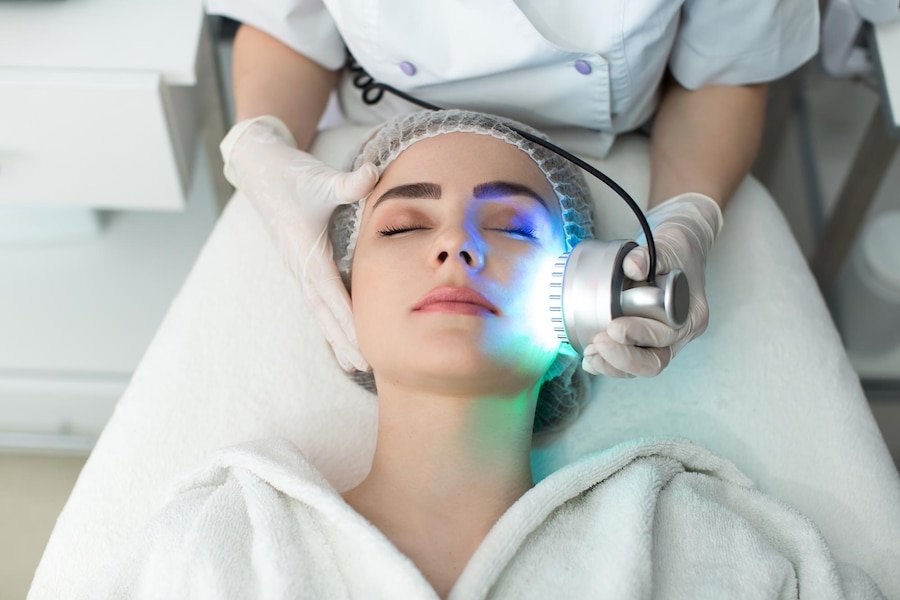Scar Removal
Scars form as the skin works to heal itself after a trauma, such as burns, injuries, severe acne, or surgeries. During the healing process, the skin regenerates to protect against infections, closing the damaged area. Healthy cells migrate to the wound, multiplying to restore the skin’s surface. However, this regeneration process can sometimes result in uneven texture, hyperkeratinization, or discoloration, leaving scars that differ from the surrounding skin.
Our advanced scar removal treatments are designed to minimize these irregularities, smoothing the skin’s surface and promoting a more even, flawless complexion. Whether your scars are from acne, surgery, or injury, we tailor each treatment to your specific needs, helping restore your skin’s natural beauty.
Common Causes of Scars:
- Persistent acne can leave behind deep or raised scars.
- Cuts, scrapes, or wounds often lead to visible scars as they heal.
- Surgical incisions can sometimes result in noticeable scarring.
- Burns can cause discolored or thickened scar tissue.
- Rapid changes in body size, such as pregnancy or weight gain, can lead to stretch marks, a form of scarring.
cars form when the skin repairs damage caused by injuries, acne, surgeries, or burns. While scarring is a natural part of the healing process, it can leave behind unwanted texture, discoloration, or raised marks. Our medspa offers a range of treatments to improve the appearance of scars by promoting skin regeneration and evening out the skin tone. Below, we explain the key methods used to reduce scars.
Treatment Methods
- Laser Therapy (Fractional Laser Resurfacing)
- Microneedling (Collagen Induction Therapy)
- Chemical Peels
- Dermal Fillers for Atrophic Scars
- Subcision for Deep Acne Scars
Our treatments target damaged skin tissue and promote the production of healthy skin cells to minimize scar visibility. Procedures like laser therapy, microneedling, and chemical peels encourage your skin’s natural healing process, improving its texture and tone.
Laser Therapy (Fractional Laser Resurfacing)
Treatment Areas: Face, neck, chest, back, hands
Microneedling (Collagen Induction Therapy)
Treatment Areas: Face, neck, chest, back, hands, stretch mark areas (abdomen, thighs)
Chemical Peels
Treatment Areas: Face, neck, chest, hands
Dermal Fillers for Atrophic Scars
Treatment Areas: Face (cheeks, chin, forehead), other areas with depressed scars
Subcision for Deep Acne Scars
Treatment Areas: Face (particularly cheeks), other areas with deep, rolling scars
- Smoother Skin: Improves skin texture by reducing rough or raised areas.
- Even Skin Tone: Minimizes discoloration caused by scarring.
- Boosted Confidence: Helps restore a more youthful, even complexion.
- Non-Invasive: Many treatments are gentle, requiring little to no downtime.
- Long-Lasting Results: With proper aftercare, results can be permanent.
- Laser Therapy: Uses targeted laser energy to break down scar tissue and stimulate new skin cell growth.
- Microneedling: Tiny needles create micro-injuries in the skin, triggering the body’s healing response to improve texture and reduce scarring.
- Chemical Peels: Specially formulated acids are applied to exfoliate the top layer of skin, encouraging new skin to replace damaged tissue.
Healing Time
Healing time depends on the type of procedure and the severity of your scars. On average:
- Laser Therapy: 5-7 days for mild redness and swelling to subside.
- Microneedling: 2-4 days of mild redness and tenderness.
- Chemical Peels: 3-7 days for peeling and redness to diminish.
Can Scars Be Removed Permanently?
While scars cannot be completely removed, they can be significantly improved through treatments like laser therapy, microneedling, chemical peels, dermal fillers, and subcision. These methods work by stimulating the skin’s natural healing process, reducing the visibility, texture, and discoloration of scars. However, the extent of improvement depends on factors such as the type of scar, its depth, and how your skin responds to treatment. While scars may not disappear entirely, they can be minimized to the point where they are barely noticeable, with some treatments requiring multiple sessions or ongoing maintenance for long-lasting results.

Your Most Common Questions Answered
Laser therapy, specifically fractional laser resurfacing, is often considered the fastest and most effective way to reduce scars. It works by targeting the deeper layers of skin to break down scar tissue and stimulate collagen production. Depending on the severity of the scar, you may notice improvements after just a few sessions.
Yes, scar treatment is often worth it for people looking to improve the appearance of scars and boost their confidence. While complete removal may not be possible, treatments like laser therapy, microneedling, and chemical peels can significantly reduce the visibility of scars, making them less noticeable and improving overall skin texture.
It’s never too late to treat a scar. Older scars may require more sessions or different approaches, but treatments like laser therapy, microneedling, and subcision can still offer significant improvements, even on scars that have been present for years.
Bio-Oil can help improve the appearance of scars over time, especially for newer or less severe scars. It works by moisturizing the skin and improving its elasticity, which can soften the appearance of scars. However, for deep or older scars, professional treatments like laser therapy or microneedling will provide more noticeable results.
Laser therapy, particularly fractional laser resurfacing, is considered the best technology for scar removal. It’s effective at reducing the appearance of various types of scars, including acne, surgical, and injury scars, by promoting collagen production and resurfacing the skin.
Keloid scars are generally the hardest to treat. They are raised, thick scars that extend beyond the original wound area and tend to regrow even after treatment. Keloid scars are often resistant to many forms of treatment, making them more difficult to reduce than other types of scars.
Rejuvenate Your Face And Hair With PRP Therapy!
Major skin issues and hair fall can occur because of any underlying disease or growing age. The most common causes are hormonal imbalance, stress, nutritional deficiencies or other autoimmune diseases. Nearly every other individual today suffers from some type of skin issue. PRP therapy is a skin rejuvenation and treatment method in Toronto, ON, that can help you heal through this.
PRP therapy is a relatively new approach to healing health issues, majorly skin and hair problems. What is PRP therapy in general terms? It is a non-surgical procedure to treat acne, scars, pigmentation removal, dull skin tone, fine lines or wrinkles. The therapy involves inducing plasma into the body using different techniques. This introduction of plasma into the body stimulates collagen-inducing cells and new blood vessel formation, making the skin rejuvenated and replenished.

